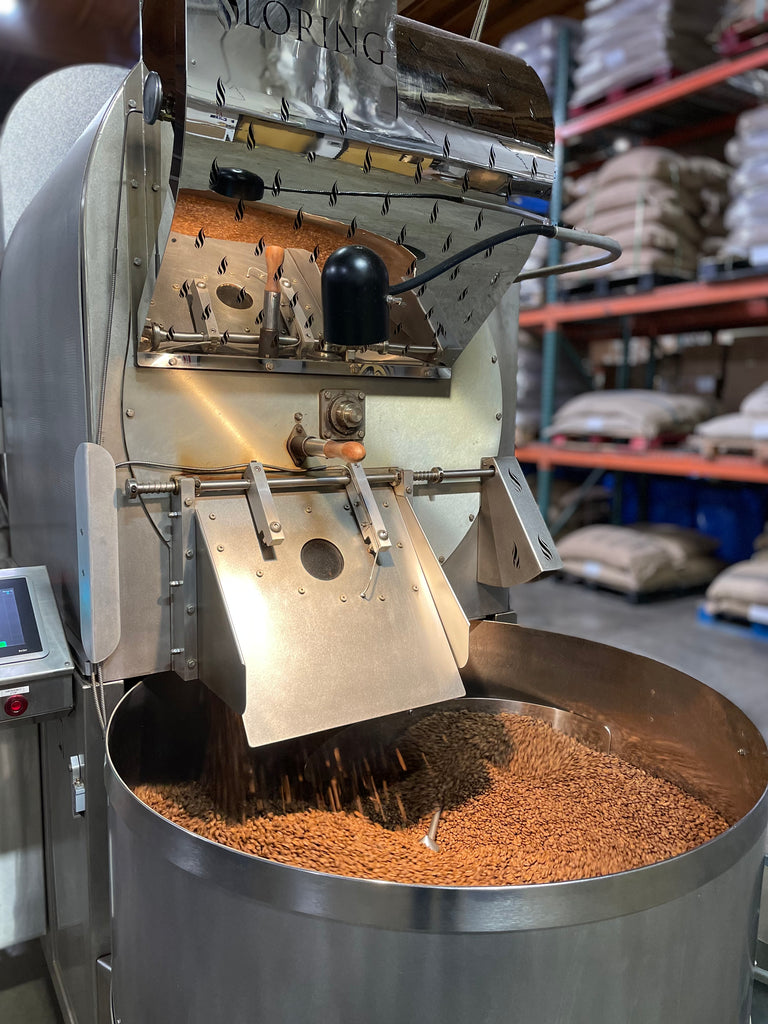Hot Air Roasting
Posted by NAVEEN MUWAL

Longbottom coffees are characterized by a smooth, rich flavor that reflects the roast level and true essence of each bean.
A key part of our philosophy to coffee is exemplified by the fluid bed roasting method we have perfected over four decades. Originally developed by Michael Sivetz, the fluid bed roasting process, also known as hot air roasting, uses forced hot air to roast coffee beans. Today we use state of the art Loring roasters that allow even more precise control of the roast profile. Perfectly controlled hot air circulates through the beans, roasting each bean evenly. This hot air reaches temperatures of between 450 and 485 degrees Fahrenheit.
During the roasting process, the green coffee beans go through two major “pops” or “cracks” The first occurs when the internal temperature of the bean reaches approximately 356 degrees Fahrenheit. By this point the silverskin or chaff has been expelled as the bean as it expands to double its original size. With the hot-air roasting process, this chaff is carried out of the roaster into a separate chamber and not burned up with the coffee. Because coffee is so absorbent, if the chaff is burnt within the roasting chamber, the coffee soaks up this unwanted flavor and it shows up in your cup. This process of eliminating chaff and other impurities is a unique and important aspect of the fluid bed roasting method that we employ each day.
Another advantage stems from the greater efficiency in heat transference that is possible with hot air roasters. The beginning stages of coffee roasting are focused on driving moisture from the bean; this moisture content can be as much as 12% by weight. The bean can not actually be roasted until the moisture is removed, so this step is critical. When the coffee bean still contains this moisture, prolonged exposure to high heat results in “cooking” rather than “roasting” of the bean. The longer it cooks, the greater the formation of acetic and quinic acids. Since the fluid bed roaster can reach higher temperatures in half the time of typical cylindrical roasters, the time for these acidic compounds to form is greatly reduced. Many have found that these acidic compounds can cause stomach irritation, and we have many customers that had given up on coffee but can now drink ours comfortably.

 Longbottom Coffee & Tea
Longbottom Coffee & Tea